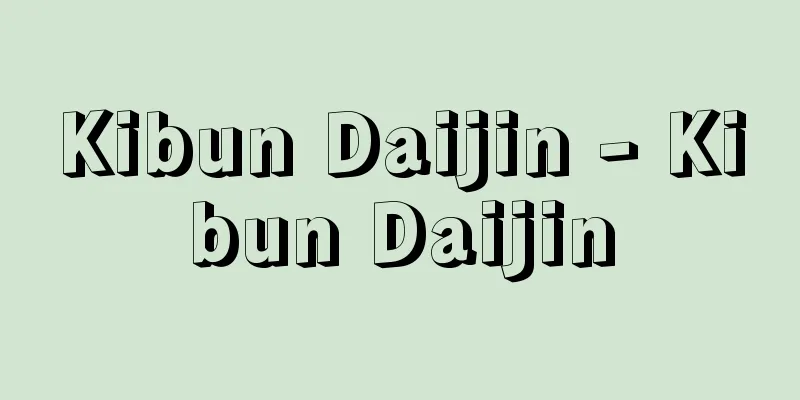Kibun Daijin - Kibun Daijin

|
The title of a Nagauta song. It was first performed in 1911 (Meiji 44). The lyrics were written by Nakauchi Choji, and the music was composed jointly by Yoshizumi Kosaburo (Jikyou) and Kineya Rokushiro (Kineya Jokan). The lyrics are about how the second Kinokuniya Bunzaemon gets drunk while having a lavish time in Yoshiwara, falls asleep, and dreams of the first Kinokuniya carrying mandarin oranges to Edo in a rainstorm. He realizes that he has squandered away the enormous wealth his father had built, but wakes up to indulge in carnage again. The opening piece, "Arashi no Aikata," is tuned in a unique way, and the unstable pitch of the three strings expresses the ominous scene of a raging sea, giving it a program-like idea. [Kiyoko Moteki] Source: Shogakukan Encyclopedia Nipponica About Encyclopedia Nipponica Information | Legend |
|
長唄(ながうた)の曲名。1911年(明治44)初演。中内蝶二(なかうちちょうじ)作詞、吉住(よしずみ)小三郎(慈恭(じきょう))と杵屋(きねや)六四郎(稀音家浄観(きねやじょうかん))の共同作曲。歌詞の内容は、2代目紀之国屋(きのくにや)文左衛門が吉原で豪遊中に酔って眠り込み、初代が暴風雨のなかを江戸へミカンを運んだ夢をみ、父親の築いた巨額の富を使い果たしている自分に気づくが、夢から覚めてもふたたび遊興にふけるというもの。曲の冒頭の「嵐(あらし)の合方(あいかた)」は一下りという独特な調弦で、荒れ狂う海の不穏な情景を3本の糸の不安定な音程感で表し、標題音楽的な発想が感じられる。 [茂手木潔子] 出典 小学館 日本大百科全書(ニッポニカ)日本大百科全書(ニッポニカ)について 情報 | 凡例 |
<<: Cavalry - kihei (English spelling) cavalry
Recommend
Gaussian curvature
...Consider all planes that contain the normal to...
Cayenne (Plant) (English spelling) Cayenne
…var. longum (English name: long pepper) produces...
False jewel - Giboshi
〘Noun〙 (A variation of "giboshu (fake jewel)&...
Gobineau - Joseph-Arthur de Gobineau
French diplomat and author. After spending a doze...
Cobo - Cobo,Juan
Year of death: 1592.11 (1592.11) Year of birth: un...
Akumal Mosque
…capital of the Arab Republic of Egypt. Populatio...
Malva moschata (English spelling)
…[Yoshiharu Iijima]. … *Some of the terminology e...
osteoporosis
Definition and Concept Osteoporosis is a condition...
Lock seaweed - Lock seaweed
…It is known to be distributed in northern Europe...
Matsudaira Harusato
The 7th feudal lord of Matsue Domain in Izumo Pro...
Ekaterinodal - Ekaterinodal
→Krasnodar Source : Heibonsha Encyclopedia About M...
Fusarium (English spelling)
A mold in the Moniliales imperfect fungi family, P...
Coracoid bone - Coracoid
Bones in the shoulder girdle of vertebrates. Repti...
dbX system
...The sensation of having a sound image inside y...
Mangrove - Mangrove
…A general term for trees of the family Rhizophor...









